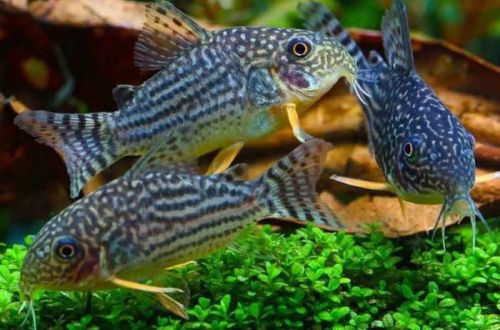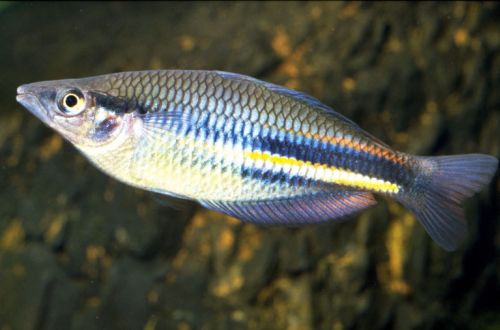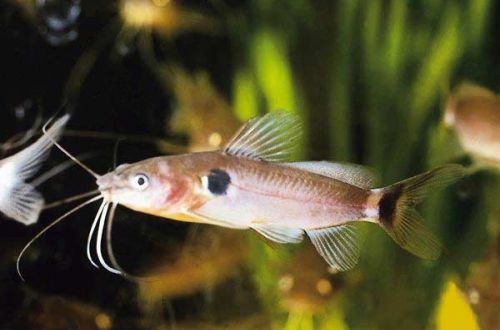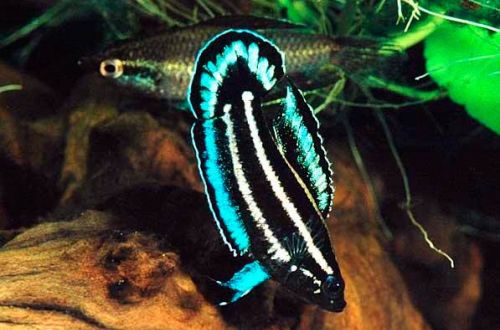
Šterba Corridor
Corydoras Sterba, scientific name Corydoras sterbai, belongs to the family Callichthyidae (Shell or Callicht catfish). The fish is native to South America. Inhabits the basin of the Guapore River in western Brazil, which in turn is part of the middle Amazon basin. It occurs in small tributaries, streams, in areas of flooded forest.

Description
Adult individuals reach a length of no more than 7 cm, usually somewhat smaller – 5–6 cm. It has a stocky body shape typical of Corydoras. Instead of the usual scales, these catfish are covered with rows of bony plates that serve as a reliable defense against small predators. The first rays of the fins are noticeably thickened and have sharp tips, turning into a kind of spikes – another of the elements of protection.
Outwardly, it resembles the Mosaic Corydoras, whose pattern consists of dark specks on a light background, while the Sterba Corydoras has the opposite – rows of light dots are located on a dark background.
Brief information:
- The volume of the aquarium – from 50 liters.
- Temperature – 24-28°C
- Value pH — 6.0–7.8
- Water hardness – soft to medium hard (1-15 dGH)
- Substrate type – sandy
- Lighting – subdued or moderate
- Brackish water – no
- Water movement – light or moderate
- The size of the fish is up to 7 cm.
- Nutrition – any drowning
- Temperament – peaceful
- Keeping in a small group of 3-4 individuals
Behavior and Compatibility
Peaceful friendly fish, gets along well with its relatives and other species of comparable size. It is recommended to maintain a group size of 5-6 individuals so that catfish feel more secure than alone. As neighbors in the aquarium, you should not consider bottom territorial fish.
Maintenance and care, arrangement of the aquarium
It is considered a simple and unpretentious species. The vast majority of Sterba Corydoras for sale have been cultivated for many generations in an artificial environment, due to which they are noticeably hardier than their wild relatives and successfully adapt to various conditions.





